The Intel Broadwell Desktop Review: Core i7-5775C and Core i5-5675C Tested (Part 1)
by Ian Cutress on June 2, 2015 7:45 AM ESTProfessional Performance: Linux
Built around several freely available benchmarks for Linux, Linux-Bench is a project spearheaded by Patrick at ServeTheHome to streamline about a dozen of these tests in a single neat package run via a set of three commands using an Ubuntu 11.04 LiveCD. These tests include fluid dynamics used by NASA, ray-tracing, OpenSSL, molecular modeling, and a scalable data structure server for web deployments. We run Linux-Bench and have chosen to report a select few of the tests that rely on CPU and DRAM speed.
Due to our limited testing time and other issues, only the i7-5775C was processed in our Linux tests. These should be updated for Part 2.
C-Ray: link
C-Ray is a simple ray-tracing program that focuses almost exclusively on processor performance rather than DRAM access. The test in Linux-Bench renders a heavy complex scene offering a large scalable scenario.
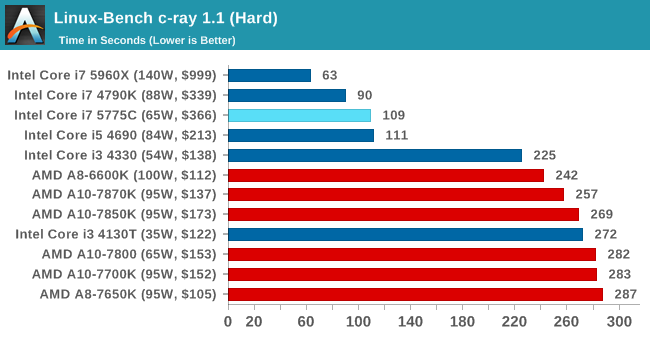
NAMD, Scalable Molecular Dynamics: link
Developed by the Theoretical and Computational Biophysics Group at the University of Illinois at Urbana-Champaign, NAMD is a set of parallel molecular dynamics codes for extreme parallelization up to and beyond 200,000 cores. The reference paper detailing NAMD has over 4000 citations, and our testing runs a small simulation where the calculation steps per unit time is the output vector.
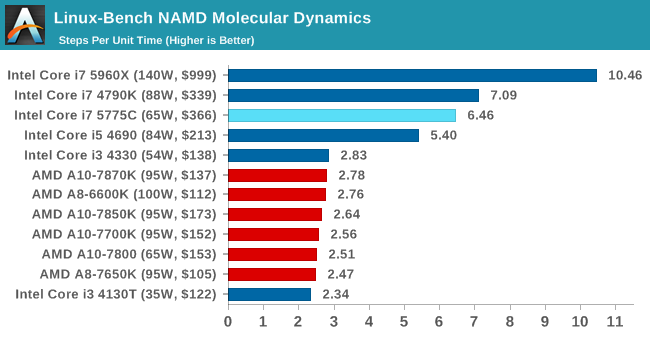
NPB, Fluid Dynamics: link
Aside from LINPACK, there are many other ways to benchmark supercomputers in terms of how effective they are for various types of mathematical processes. The NAS Parallel Benchmarks (NPB) are a set of small programs originally designed for NASA to test their supercomputers in terms of fluid dynamics simulations, useful for airflow reactions and design.
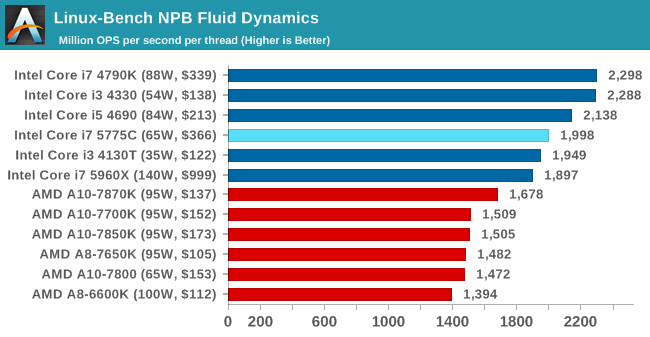
Redis: link
Many of the online applications rely on key-value caches and data structure servers to operate. Redis is an open-source, scalable web technology with a b developer base, but also relies heavily on memory bandwidth as well as CPU performance.
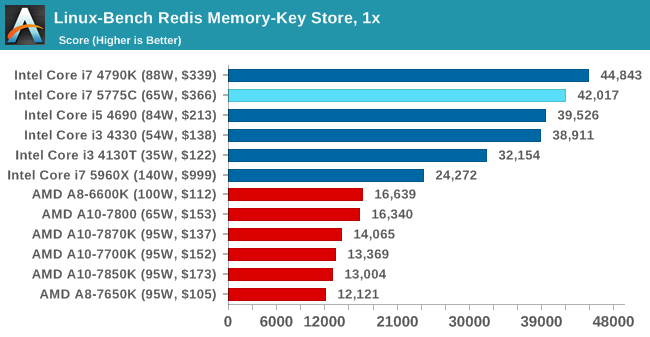
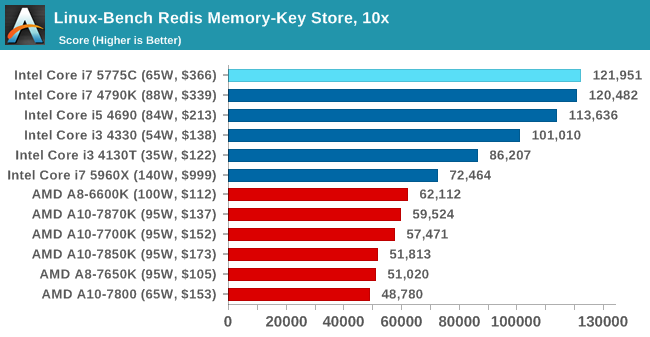
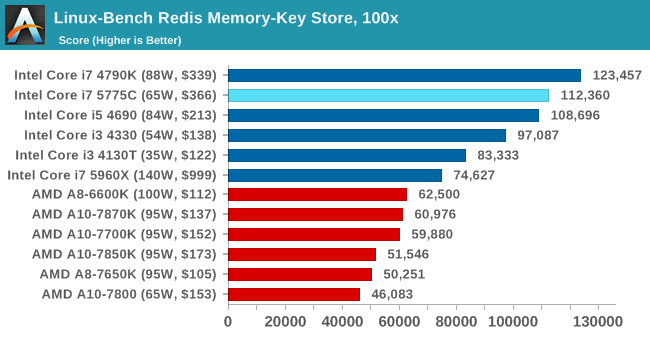










196 Comments
View All Comments
Pcorb - Tuesday, June 2, 2015 - link
I'm not so sure that high end desktop users are a large enough demographic that Intel will be complaining any time soon.yannigr2 - Wednesday, June 3, 2015 - link
Yes I am shouting that for a month now, but of course I was treated as an AMD brainless fanboy when pointing at that, so I must be wrong. Now we have a chart that it is misleading and hilarious at the same time. If Ian had done what is right and logical, those charts would have been informative, correct and fair. I think AMD created 7870K just to troll Ian's charts.Hulk - Tuesday, June 2, 2015 - link
It would be really nice if you would note the frequency each processor is running during each test. With all the turbos these days it's hard to know and therefore hard to make IPC comparisons.Mr Perfect - Tuesday, June 2, 2015 - link
Yes, please. Once upon a time, I would have had the clocks for all the models memorized, but without that comparing IPC is difficult to impossible without the clocks noted.MrSpadge - Tuesday, June 2, 2015 - link
+1Lonyo - Tuesday, June 2, 2015 - link
You state in the opening that if you upgrade on a 3 year cycle, you would be coming from SandyBridge. Would it not make sense to have some older Intel processors in the graphs?Ian Cutress - Tuesday, June 2, 2015 - link
With a recent new testing suite, we haven't gone back through enough generations yet with the new benchmarking scheme. You can still check legacy benchmarks (Cinebench 10 / POV-Ray) between old and new in Bench. www.anandtech.com/benchHulk - Tuesday, June 2, 2015 - link
Yes. One thing Anand did amazingly well was review the new Intel processors. Clock-normalized IPC comparisons from previous generations is really what we want to see. As well as normalized power consumption, ie energy used completing the same workload.mgilbert - Tuesday, June 2, 2015 - link
As a normal home PC user/gamer, I couldn't care less about small differences in power consumption. Sure, 100 Watts might matter, but what matters most to me is outright performance.Martin84a - Tuesday, June 2, 2015 - link
As a normal PC user/gamer, that's all I care about. Less heat and thus less noise. Having a passively cooled PC that never goes above 65C under load is pure bliss.